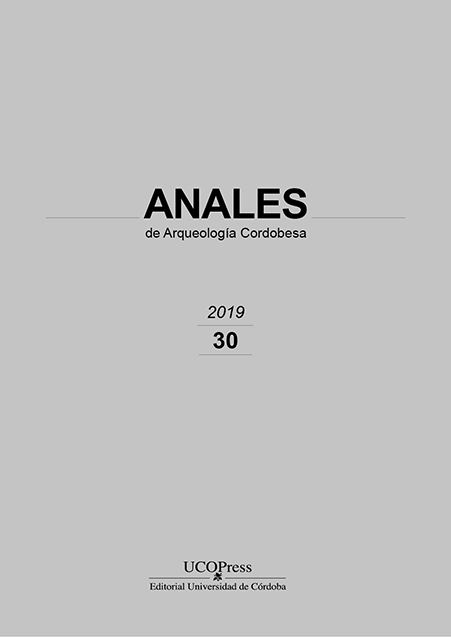Concurrencia y complementariedad: nuevos paradigmas de producción y consumo en la economía romana
DOI:
https://doi.org/10.21071/aac.v30i.12438Palabras clave:
Economia romana, comercio romano, ánforas, transporte, odres, barriles.Resumen
Las investigaciones arqueológicas desarrolladas en distintos campos de la denominada “Arqueología de la Producción”, nos han llevado a un cambio de paradigma en los estudios de la economía en el mundo antiguo. No es posible contemplar el transporte de sustancias líquidas y semilíquidas sólo a partir de las ánforas “canónicas”. Cada vez resulta más evidente que el mundo romano empleo otros tipos de recipientes, tanto cerámicos (ánforas de fondo plano), como perecederos (barriles, odres), para cubrir todos los segmentos del proceso de comercialización, desde el envasado hasta la redistribución en el ámbito de los centros de consumo. Los registros estratigráficos del campamento romano de León nos permiten algunas reflexiones a este respecto.Descargas
Los datos de descargas todavía no están disponibles.
Descargas
Publicado
2019-12-15
Cómo citar
MORILLO CERDÁN, ÁNGEL, & MORAIS, R. (2019). Concurrencia y complementariedad: nuevos paradigmas de producción y consumo en la economía romana. Anales De Arquelogía Cordobesa, 30, 161–186. https://doi.org/10.21071/aac.v30i.12438
Número
Sección
Artículos
Licencia
Aquellos autores/as que tengan publicaciones con esta revista, aceptan los términos siguientes:- Los autores/as conservarán sus derechos de autor y garantizarán a la revista el derecho de primera publicación de su obra, el cuál estará simultáneamente sujeto a la Licencia de reconocimiento de Creative Commons que permite a terceros compartir la obra siempre que se indique su autor y su primera publicación esta revista.
- Los autores/as podrán adoptar otros acuerdos de licencia no exclusiva de distribución de la versión de la obra publicada (p. ej.: depositarla en un archivo telemático institucional o publicarla en un volumen monográfico) siempre que se indique la publicación inicial en esta revista.
- Se permite y recomienda a los autores/as difundir su obra a través de Internet (p. ej.: en archivos telemáticos institucionales o en su página web) antes y durante el proceso de envío, lo cual puede producir intercambios interesantes y aumentar las citas de la obra publicada. (Véase El efecto del acceso abierto).


